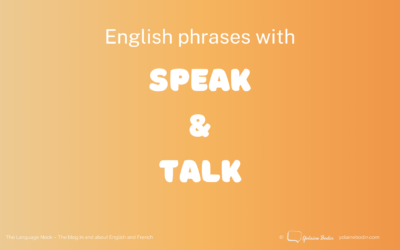The English verbs to lay and to lie are often confused.
You’re not sure about which one to use? You know there is a difference but you don’t really know what it is? You know the difference when using the present tense but you get muddled up when you need to use them in the past tenses?
You’re not the only one! The confusion between these two verbs is very common but, by the end of this post, your doubts will be dispelled! 😉
To lie is a verb with two different meanings, but one is a regular verb while the other is irregular.
To lie can mean to say something that you know is not true, and with this meaning, it is a regular verb, which means that the simple past and the past participle forms are lied, lied
- They lied when they said they attended the conference. I know they didn’t, they spent the day sightseeing instead.
To lie can also mean to recline, put yourself in a horizontal position. It is something you do yourself and to yourself. This verb is an irregular verb. The simple past form is lay and the past participle is lain. Its -ing form is lying. Here are a few examples:
- I like lying in the grass.
- They always lie on the sofa to watch TV.
- He lay in bed all morning yesterday.
- They have lain in the sun.
Try to remember the three forms together: lie, lay, lain so you spontaneously associate the three words, the three sounds together.
To lay means to place, to put something down. It is an action you do to something or someone, so this verb is always followed by a complement. That’s why this is the verb to use when you prepare the table before a meal, placing plates and cutlery on the table: you lay the table. Also, we say that hens lay eggs.
Of course, you can see why the confusion with to lie is so easy: the present tense of lay is the same form as the simple past tense of the other verb to lie.
But, at least for the pronunciation, to lay is a regular verb. You only have to be careful with the spelling that changes because the y becomes i: to lay, laid, laid. Its -ing form is laying. Here are some examples:
- She was laying her baby in his cot when they entered the room.
- Their children always lay the table on Sundays.
- He cleared his desk and laid all the photos on it.
- Look! I’ve laid all the plants on the window ledge.
Again, try to remember the three forms together so that they are closely linked in your mind – lay, laid, laid, see how to the sounds go smoothly together. 🙂
Useful tip ! There are a few tips that can help you remember, choose the one that works best for you:
- lay with an a is something you do to another (a-a)
- lie with an i means to recline (i-i)
- memorise the sentence Hens lay eggs: it will help you remember that lay needs a complement, and that it means to put something down, to place something.
- memorise the sentence I like to lie here: it will help you remember that you don’t need a complement, you lie, just yourself, you don’t do it to someone or something.
- visualise lay the baby: babies don’t go to their cot on their own, here lay is an action made by the parents to their baby. Also note you get the same vowels a and y in lay and in baby?
In each case, if you have learnt the three forms lie, lay, lain and lay, laid, laid, and if you remember one of these tips, then you are sure to use the correct verb.
There you are! Now you know the difference between the verbs to lay and to lie, congratulations! 🙂





0 Comments